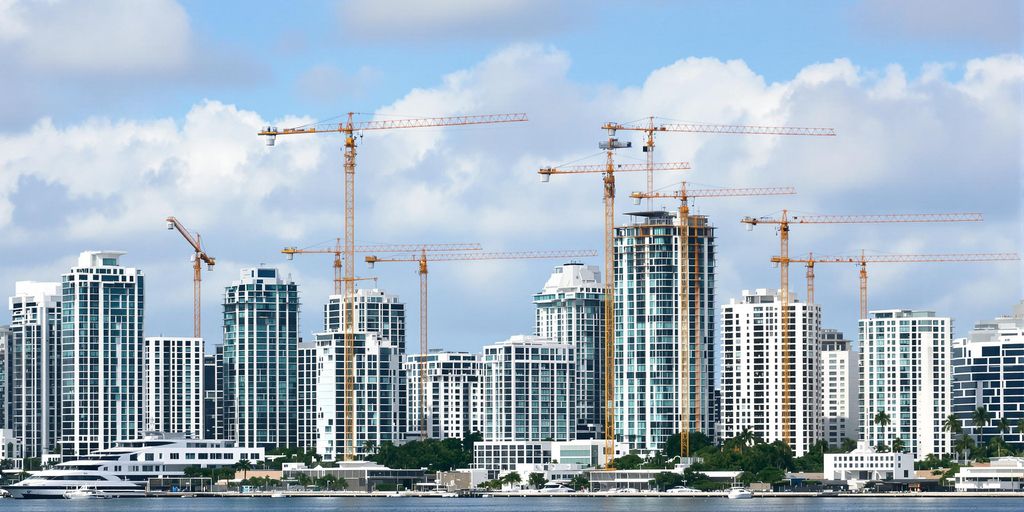Miami-Dade County is experiencing a surge in development, with significant projects approved and underway across various sectors, including mixed-use, residential, and industrial. This boom is driven by a combination of economic growth and new legislation aimed at addressing housing needs, particularly for the workforce.
Major Mixed-Use Development Approved
Miami-Dade County has given the green light for The HueHub, an $880 million mixed-use development in the West Little River district. This ambitious project, led by Spanish developer Pablo Castro and local partner Laura Tauber, will feature over 4,000 "attainably priced" apartments across seven 35-story towers. The development will also include nearly 200,000 square feet of interior amenities and a two-acre park. The HueHub is notable for being one of the largest projects to leverage Florida’s Live Local Act, a law designed to expedite the development of affordable and workforce housing. Construction is expected to commence by the end of the year.
Workforce Housing Initiatives Take Center Stage
The county is also seeing the first tangible results of the Live Local Act with the groundbreaking of Beacon Hill at Princeton. This 112-unit development is Miami-Dade’s first project fully conceived and approved under the act, specifically targeting workforce housing. While modest in scale, Beacon Hill at Princeton aims to provide a model for making the law effective in increasing housing supply for middle-income workers. Rents are projected to range from $1,700 to $2,300 for one and two-bedroom units, respectively, with income caps set at 120% of the county’s median household income. Developers are optimistic about the potential of the Live Local Act, particularly its financial incentives, to make such projects feasible.
- Key Takeaways:
- The HueHub, an $880 million mixed-use development, is set to bring over 4,000 apartments to West Little River.
- Beacon Hill at Princeton marks the first workforce housing project in Miami-Dade fully utilizing the Live Local Act.
- The Live Local Act aims to fast-track housing by overriding local density limits and offering tax incentives.
- While large-scale, high-rise projects under the act have faced challenges, smaller, workforce-focused developments are beginning to materialize.
Other Notable Developments
Beyond these major projects, Miami-Dade’s development landscape is active with other significant ventures. Carnival Corporation is relocating its global headquarters to a new campus near Miami International Airport, a move expected to be completed by 2028. This development signifies a growing business presence in the area. Additionally, plans are in motion for various other residential and industrial projects, including the Summerbreeze Apartments in Goulds and a logistics center in South Dade, indicating a broad spectrum of growth across the county’s real estate sector. The county is also actively managing waitlists for its affordable housing assistance programs, highlighting a continued focus on addressing diverse housing needs within the community.
Sources
- Miami-Dade County Approves $880M Mixed-Use Development in Miami’s West Little River District –
REBusinessOnline, REBusinessOnline. - First project under controversial state law starts in Miami-Dade, Miami Herald.
- Carnival Cruise headquarters to relocate near Miami airport, Miami Herald.
- Miami-Dade’s First All-Workforce Housing Project Set To Break Ground, Bisnow.
- Waitlist for Miami-Dade affordable housing assistance is open, Miami’s Community News.


